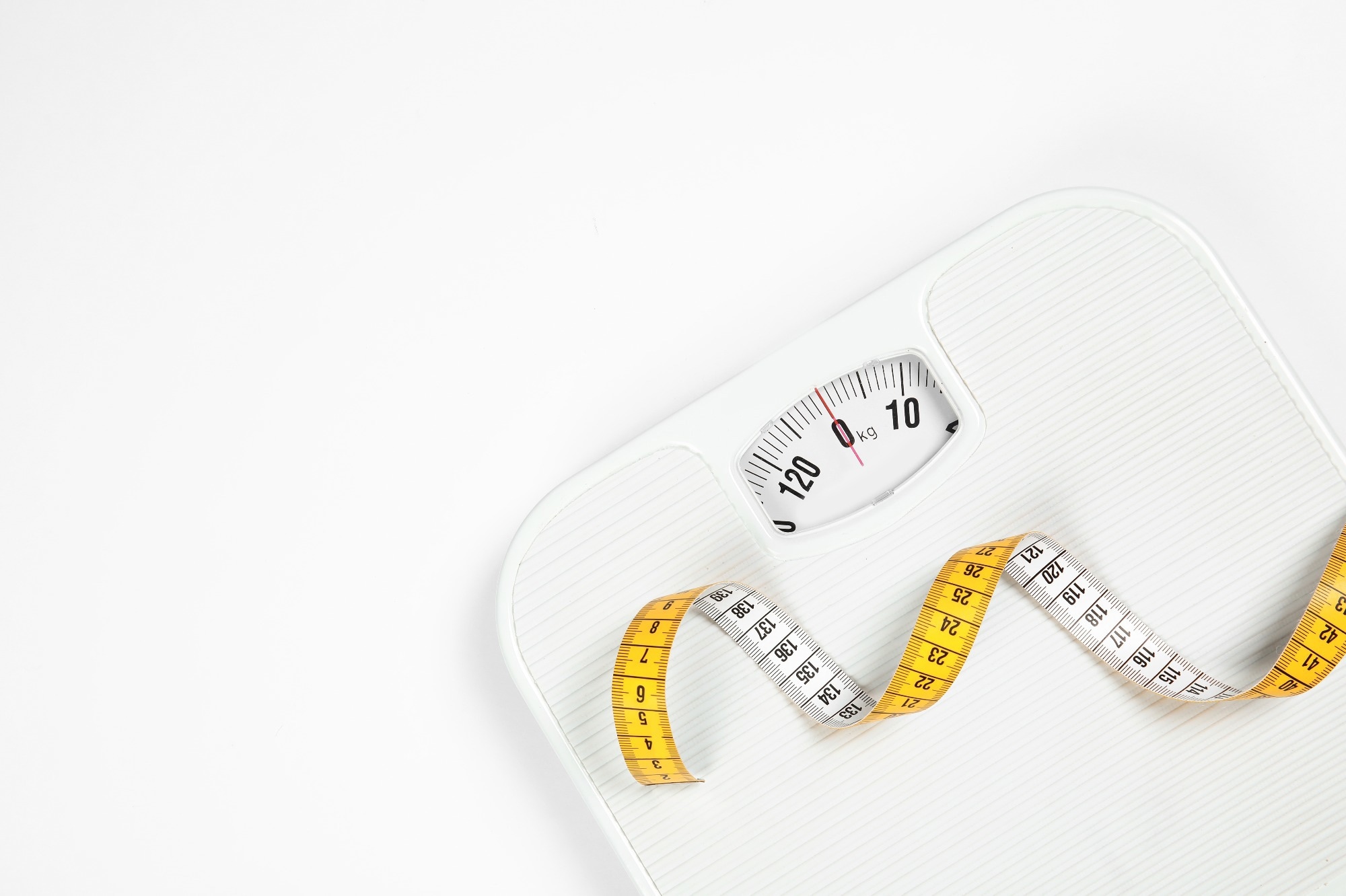Following the coronavirus disease 2019 (COVID-19) pandemic, which was caused by the emergence of the severe acute respiratory syndrome coronavirus 2 (SARS-CoV-2), many survivors have experienced long-term symptoms collectively referred to as long COVID or post-acute sequelae of SARS-CoV-2 (PASC). Long COVID symptoms may include but are not limited to, fatigue, neurological symptoms, alterations in the sense of smell and taste, as well as new-onset diabetes or autoimmune disease.
 Study: The long-term effect of COVID-19 infection on body composition. Image Credit: New Africa / Shutterstock.com
Study: The long-term effect of COVID-19 infection on body composition. Image Credit: New Africa / Shutterstock.com
The chronic effects of COVID-19
A new report published in the journal Nutrients reveals that COVID-19 may also affect body composition, even in those who did not acquire the infection. Moreover, public health restrictions on movement outside the home, with compensatory shifts in lifestyle, may have indirectly led to alterations in weight, body fat mass, and lean body mass (LBM).
The primary factors related to changes in body composition include COVID-19 with related muscle inflammation and damage, restriction of movement, a poor-quality diet, increased drinking, and less physical activity.
Previous studies have shown that body weight and fat mass increased after the first pandemic-related lockdown, whereas bone mineral density, hand grip strength, and fat mass all showed adverse trends in women. In COVID-19 survivors, sarcopenia, as well as increased weight and fat mass, have been reported, particularly in those with long COVID.
To date, the long-term effects of COVID-19 on body composition have not been reported. The current study is a pioneering exploration of this area in COVID-19, with examined parameters including lean body mass (LBM), bone mineral density (BMD), trunk fat, and total fat.
About the study
The current study utilized a prospective design to compare body composition using two whole-body DXA scans (DXA#1 and DXA#2, respectively). DXA#1 was obtained before the start of the pandemic, whereas DXA#2 was obtained thereafter. Inflammatory markers and fasting lipid levels were also measured.
For all study participants with a history of COVID-19, the DXA#2 was obtained a year or more later. The study included 160 adults with a mean age of 43 years. About 50% of the study cohort tested positive for COVID-19 before the second scan.
Over 50% of uninfected individuals were smokers, as compared to 30% in the survivor group. Moreover, 55% of survivors were diagnosed with PASC, with about 60% experiencing tiredness, 50% reporting brain fog, and 40% experiencing breathlessness and anxiety, depression, or low mood.
Only one survivor was hospitalized due to COVID-19; however, this patient did not require admission to the intensive care unit.
What did the study show?
Inflammatory markers were increased in COVID-19 patients, with higher vascular cell adhesion molecule 1 (VCAM-1) and oxidized low-density lipoprotein (LDL) levels. Conversely, tumor necrosis factor-receptor II (TNF-RII) levels declined in uninfected individuals.
Body fat increased in uninfected individuals by approximately 900 and 160 grams, respectively, compared to those diagnosed with COVID-19. Similarly, total fat increased by 1,500 and 200 grams, respectively. These differences persisted after adjusting for human immunodeficiency virus (HIV) and COVID-19 status.
High-sensitivity C-reactive protein (hsCRP) levels were associated with total and trunk fat. LBM also increased by nearly 1,000 grams among uninfected individuals and declined by 65 grams in COVID-19-survivors.
Among COVID-19 survivors, PASC did not differentiate between individuals who exhibited similar annualized trunk fat, total fat mass, or LBM measurements.
Conclusions
Notably, all COVID-19 survivors witnessed a decline in their lean body mass and an increase in several inflammatory biomarkers over the same period, suggesting a direct impact of COVID-19 on muscle.”
The study findings demonstrate that the COVID-19 pandemic resulted in increased total fat, trunk fat, and body weight, but markedly so in uninfected individuals. Thus, these effects can be attributed to pandemic-related changes, including a sedentary lifestyle, increased snacking and processed food consumption, and lockdown restrictions, rather than to the infection itself.
Although LBM increased during the study period in uninfected individuals, this characteristic marginally decreased in COVID-19-positive individuals. This could be directly related to SARS-CoV-2 infection, mainly as very few treated patients were prescribed steroids. Prior research has also reported muscle fiber atrophy and severe inflammatory damage to muscle cells with COVID-19, thus indicating that this tissue is a target of SARS-CoV-2.
Interestingly, only a few inflammatory markers were raised in COVID-19 survivors, none of which were correlated with the body composition parameters except hsCRP, which was associated with total and trunk fat.
Understanding the relationship between COVID-19 infection and alterations in body composition can help in implementing early strategies to help prevent these long-term changes as well as developing personalized exercise and nutrition plans to reduce the risk of metabolic complications.”
Journal reference:
- Atieh, O., Durieux, J. C., Baissary, J. et al. (2024). The long-term effect of COVID-19 infection on body composition. Nutrients. doi:10.3390/nu16091364.